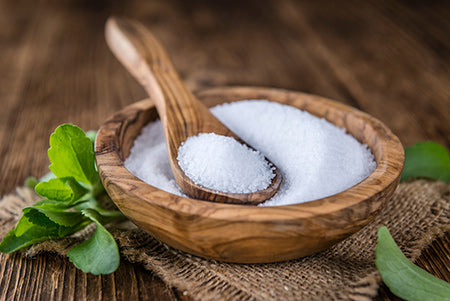Stevia: Nature's Low Glycemic Gift to Civilization

Jayson Kroner
It's almost impossible to imagine that some of the earliest known stevia plants were once heavily guarded by tribes of wild-eyed South American Indians. Impossible, that is, until you know the story.
Yes, stevia has an interesting history. In light of its secrecy, the Guarani people must have, at the very least assumed that the leaves of this odd plant held some significant value. However, foreshadowing the true measure of that significance would have been impossible at the time.
Our story begins in the heart of South America during the mid 1800s - a time when the Guarani knew said perennial only as kaa-he-he. Their applications were simple, and many remain popular today. It was initially used in their unique medicinal potions, as well as a tea-like drink known as 'bitter mate'. Many chewed the dried leaves simply to acquire the unique, refreshing taste.
As use became more common, it didn't take long for surrounding regions to catch on. Paraguay took an immediate shine to kaa-he-he. They were quick to document it, stating that the Guarani were using it in teas, foods and a number of other concoctions. Over 200 years later, these early documents are still preserved in the Paraguayan National Archives in Asuncion, Paraguay.
Sadly, neither the Guarani nor the Paraguayan historians who documented it would be credited for introducing it to mainstream society. Instead, that honour would go to an Italian botanist by the name of Moises Santiago Bertoni in 1905. After an exhaustive quest to obtain the plant, one was sent to him by a priest from the village of San Pedro. Within just one year, he had completed his research, given it a name (Stevia Rebaudiana Bertoni) and published his findings.
Word spread like wildfire. Stevia Rebaudiana Bertoni went from 'little known plant' to mainstream sensation almost overnight. Would-be growers determined that dangerous expeditions through primitive regions of South America were no longer necessary. Stevia could be easily cultivated, provided that they could mimic the moist, sweltering climate needed to do so.
And they did just that. In 1908, nearly one ton of dried stevia was harvested, thus providing the economic nudge needed to jumpstart the stevia 'industry'. In 1921, American trade Commissioner George Brady presented this information to the USDA, referring to it as a 'new plant with great possibilities'. As it turns out, America was not impressed, and put research on the backburner.
France saw things differently. In 1931 two chemists were successful in extracting the white, crystalline compounds that make stevia so unique. Ultimately, the decision was made to name these compounds steviosides. And while the findings were of great economic and scientific importance, many were left unsure as to what role steviosides could play in the lives of everyday individuals.
In the 1960's while America was engulfed in free love, political unrest and lunar landings, Japan was dealing with a government-enforced ban on the use of chemicals in food products. Word of these synthetic-free steviosides gave them new hope for some of their most popular foods and beverages. Their research was intense, as was their belief in the potential of what steviosides held for the future. By 1990, Japan accounted for over 40% of worldwide stevia use. Today, it is used on an enormous commercial level, and sales continue to escalate.
Despite its unquestionable safety and moderate US success, stevia was banned by the US FDA in 1991. Just three years later, this ban was lifted when congress passed the Dietary Supplement Health and Education Act (DHSEA). This made it possible to import Stevia as a dietary supplement. Interestingly, the study used to originally support the temporary ban was later found to be severely flawed.
Any way you look at it, Stevia is nothing short of a botanical phenomenon. Its use dates back hundreds of years without any documented adverse reactions. Decades of extensive research have proven that it's absolutely safe and free of dangerous chemicals. In fact, raw Stevia, in its natural state, contains over 100 phytonutrients.
Aside from being one of the safest natural compounds on the planet, Stevia just makes healthy sense. Even in massive amounts, it remains non-toxic, has next to no calories and doesn't promote tooth decay. With its non-bitter aftertaste, even kitchens from every corner of the globe are beginning to discover what a wonderful supplement stevia can truly be. And unlike many of the earliest users, you won't have to scour the sweltering jungles of South America to find it.
Health Disclaimer. Copyright ©2005-2021. First published April 2005, last updated June 2021. Content provided by NOW Foods. Published with permission. Jayson Kroner is a health and fitness journalist, a certified sports nutritionist, and co-author of the book '7-Syndrome Healing'.
Looking for more? In addition to stevia products, we offer a broad range of natural sweeteners suitable for many different applications.
